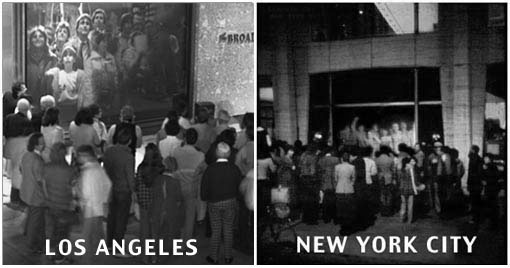


Telematic Dreaming by Paul Sermon is a video-based installation first produced in 1992.
Randall Packer describes Third Space as a space where both physical and imaginary or mental worlds collide, coming together into a network space which can be inhabited by multiple users. In the case of Telematic Dreaming, I would argue that the “third space” exists not as a place where the physical and mental worlds are combined, but rather a place where the 2 aforementioned worlds can be temporarily forgotten.

To highlight my point, we can contrast Telematic Dreaming against the installation Hole in Space which was discussed several weeks back. In HIS, the third space is taken to the extreme in terms of the sheer number of participants who are roped into it. It is evidently very much in line with Packer’s interpretation of a third space, with his definition of it being a communal and shared space among multitudes of people from differing backgrounds. In contrast, as per Sermon’s synopsis, Telematic Dreaming aims to put two strangers into a very private and intimate setting, which is only possible through the following factors of the installation:
- The bed. A bed is an object which holds a range of connotations, of sexuality, intimacy, vulnerability and innocence. The mere act of being on the same bed as a person, even if fully clothed, holds a certain degree of togetherness and intimacy.
- The technology. Unlike HIS, the intention of Sermon was not to marvel at the technology behind Telematic Dreaming but rather for the technology to be invisible, focusing on the communication and shared moment between the participants.
- The out-of-body experience. Sermon described a “psychological lift” which the participants experienced upon entering the space. He stated that participants found it difficult to return to the consciousness of their prior state after being in the artwork. By entering the telematic experience, participants discover more about themselves and benefits from the “physical” interaction.
In my opinion this seems to be different from Packer’s interpretation of the third space. To me, Telematic Dreaming seems to exist in a fourth space, separate from what Packer described; in this space, everything ceases to exist apart from the moment shared between the 2 participants, leaving them with a unique experience which cannot be recreated in any other setting. Perhaps the fourth space exists as an offshoot of the third space, or it is something which we will need to explore further as artists to understand and define.


